Designing a nursery room is an exciting journey for any parent-to-be. It is a space where your little one will grow, play and sleep, so it is absolutely important to create safe and pleasant surroundings. This guide will go over basic ideas and advice to enable you to create the ideal nursery room.
Setting the Foundation: Planning Your Nursery
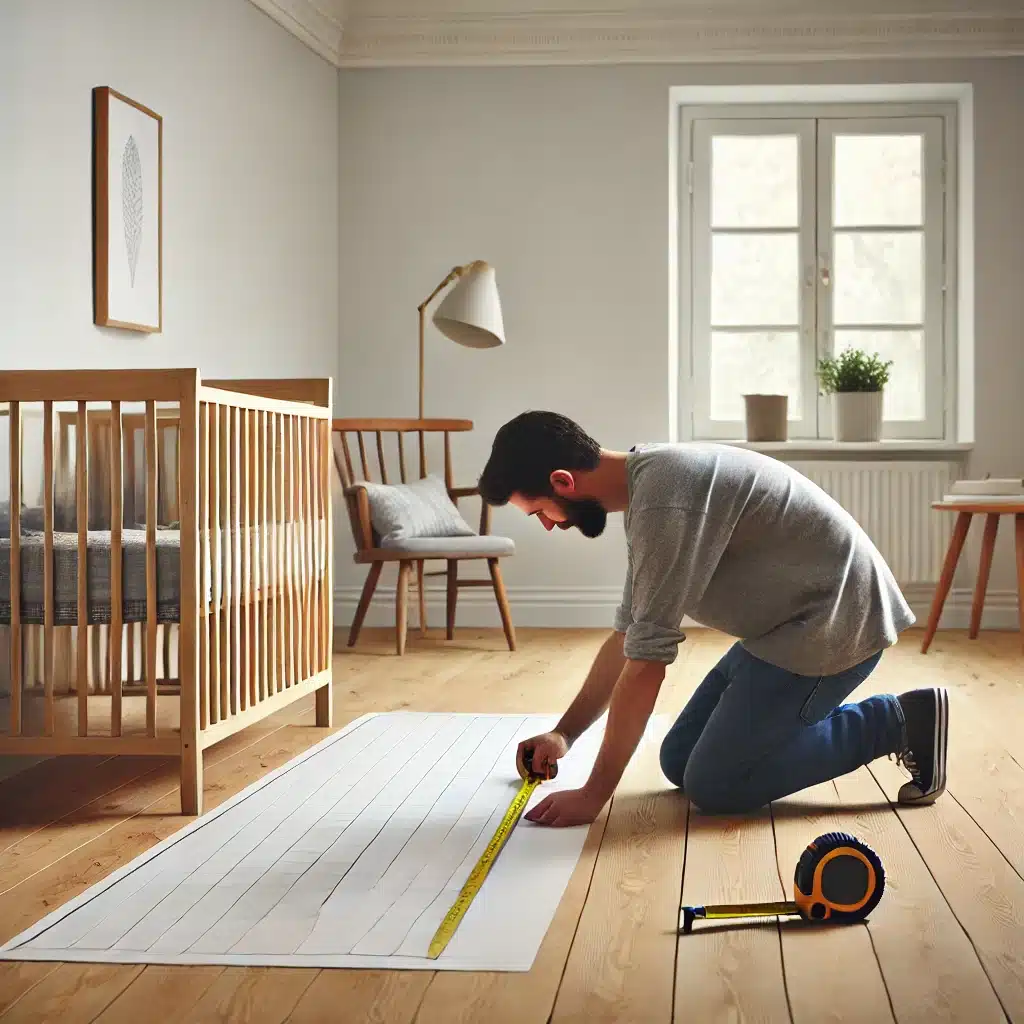
Assess Your Space
The first step in designing a nursery room is to assess the available space. Calculate the room’s measurements and record any unusual characteristics or constraints. This will guide your furniture selection and layout planning. Think on the locations of windows, doors and electrical outlets; these will affect your design decisions.
Create a Floor Plan
Sketch a floor plan to visualize where each piece of furniture will go. Consider the flow of the room and ensure there’s enough space for movement. This step helps you avoid overcrowding and makes the room more functional. You can use online tools or apps to create a digital floor plan, which makes adjustments easier.
Choosing the Right Color Scheme
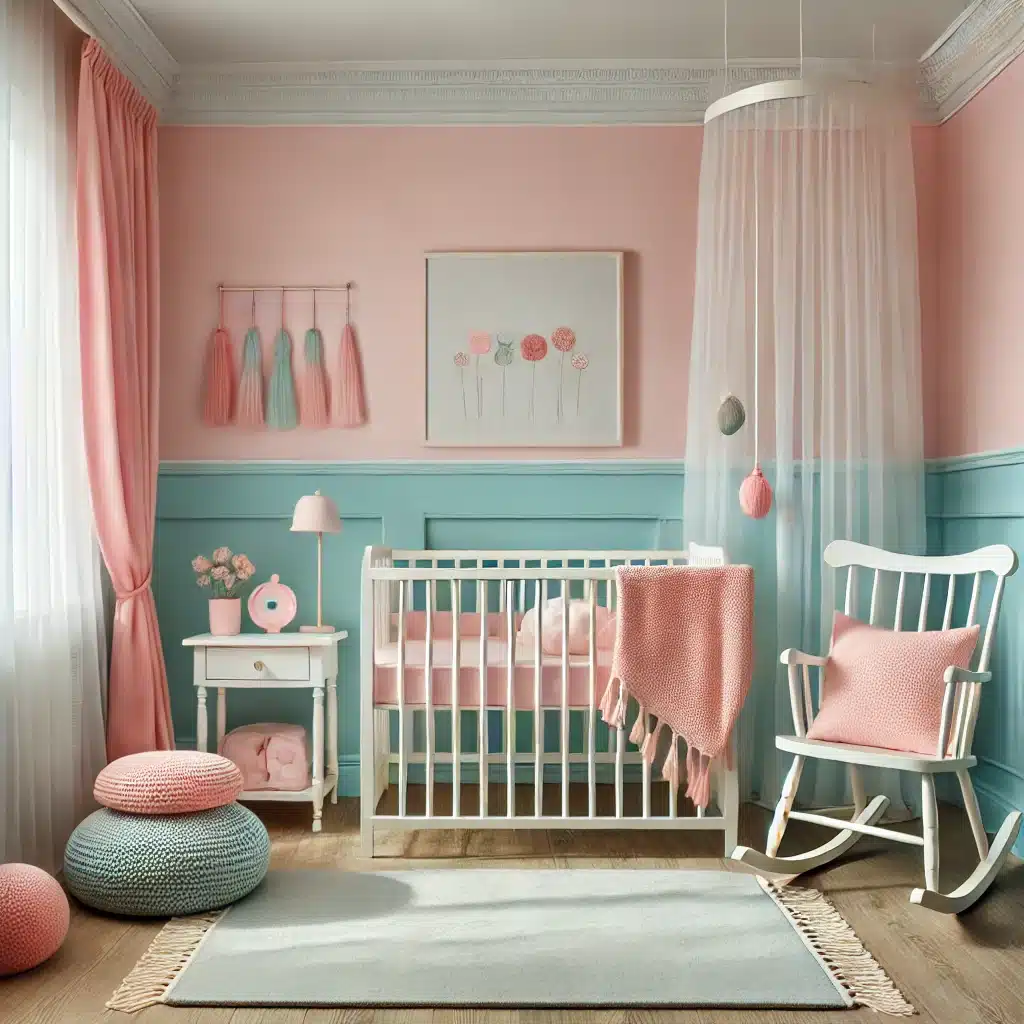
Soft and Soothing Colors
Choose soft, soothing colors like pastels, neutrals and gentle hues. These colors create a calm and peaceful environment, ideal for a nursery. Light blues, greens and pinks are popular choices. Neutral tones like beige, cream, and soft gray can also provide a timeless and versatile backdrop.
Accent Walls and Patterns
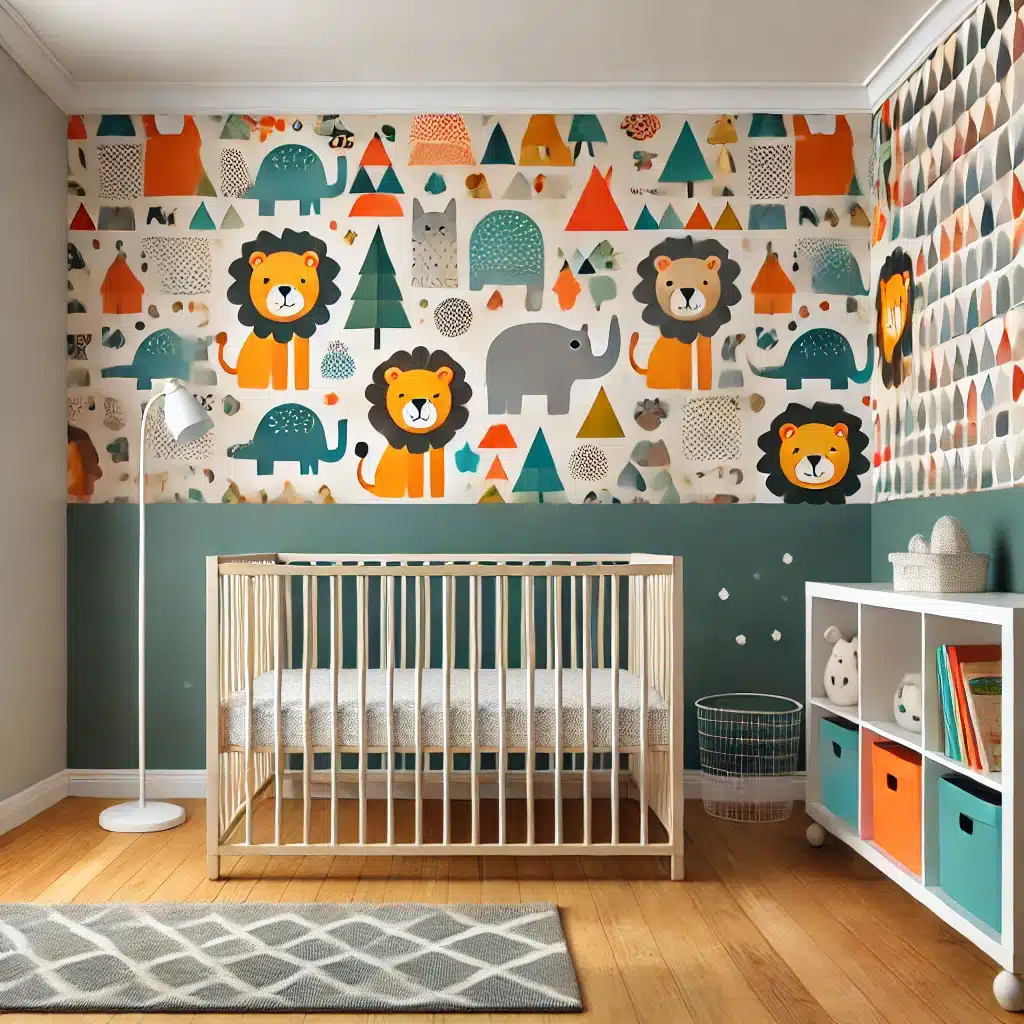
Add personality to the room with an accent wall or playful patterns. Wallpaper with cute designs or a painted mural can add charm without overwhelming the space. Consider themes like nature, animals, or geometric shapes to make the room visually stimulating.
Essential Furniture for the Nursery
Crib
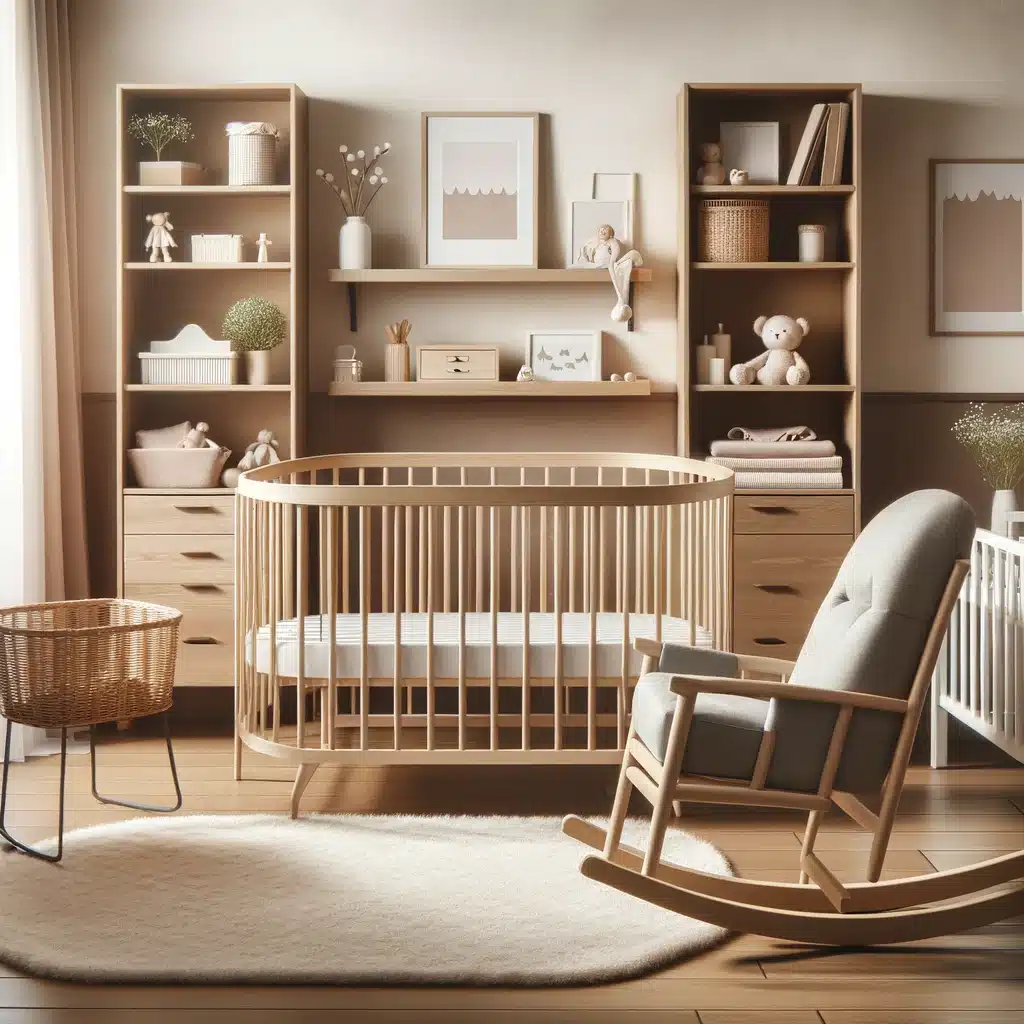
Any nursery centers around the crib. Select a strong, safe crib compliant with present safety regulations. A smart investment since convertible cribs expand with your child. Make sure the crib fits tightly against the wall and has movable mattress heights to stop any gaps.
Changing Table
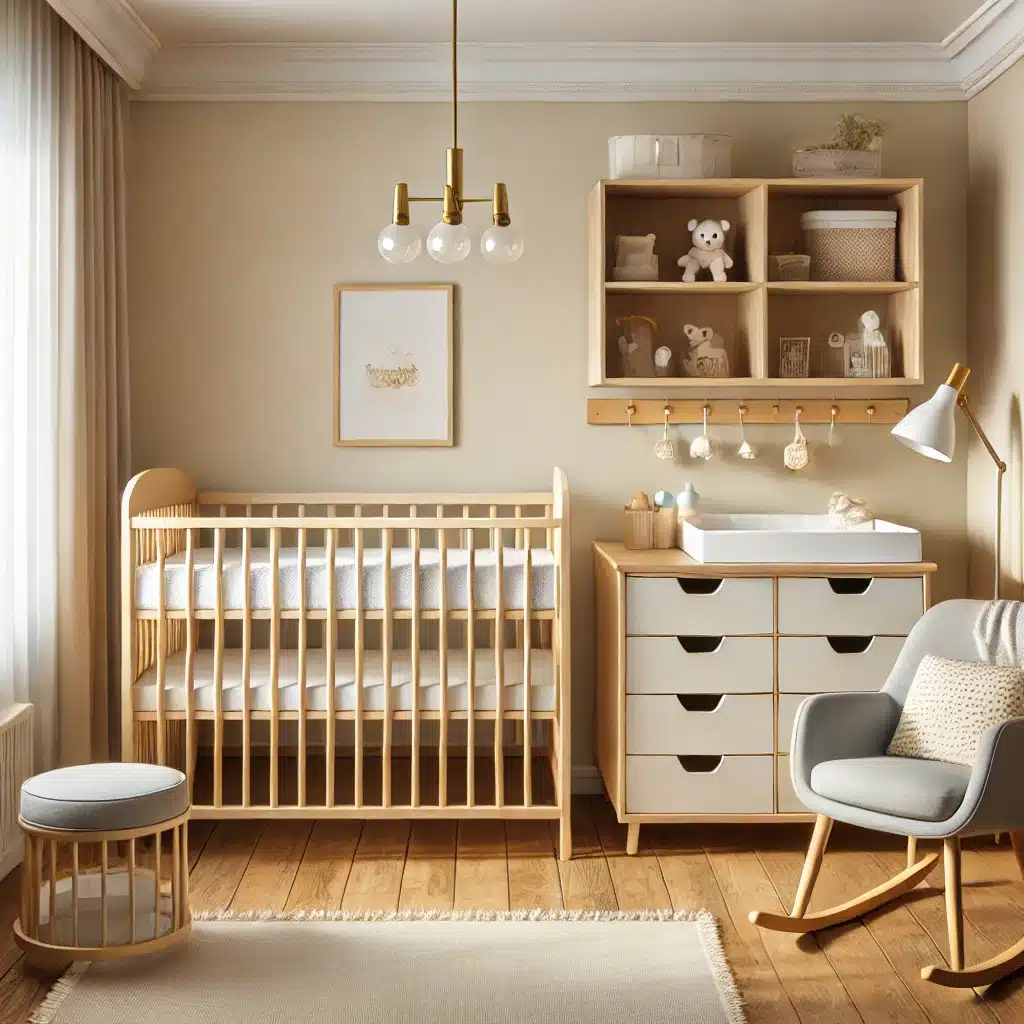
A changing table with ample storage is essential for keeping diapers, wipes and clothes organized. Some dressers come with a removable changing top, offering long-term usability. Ensure the changing table is at a comfortable height to avoid back strain during frequent diaper changes.
Rocking Chair or Glider
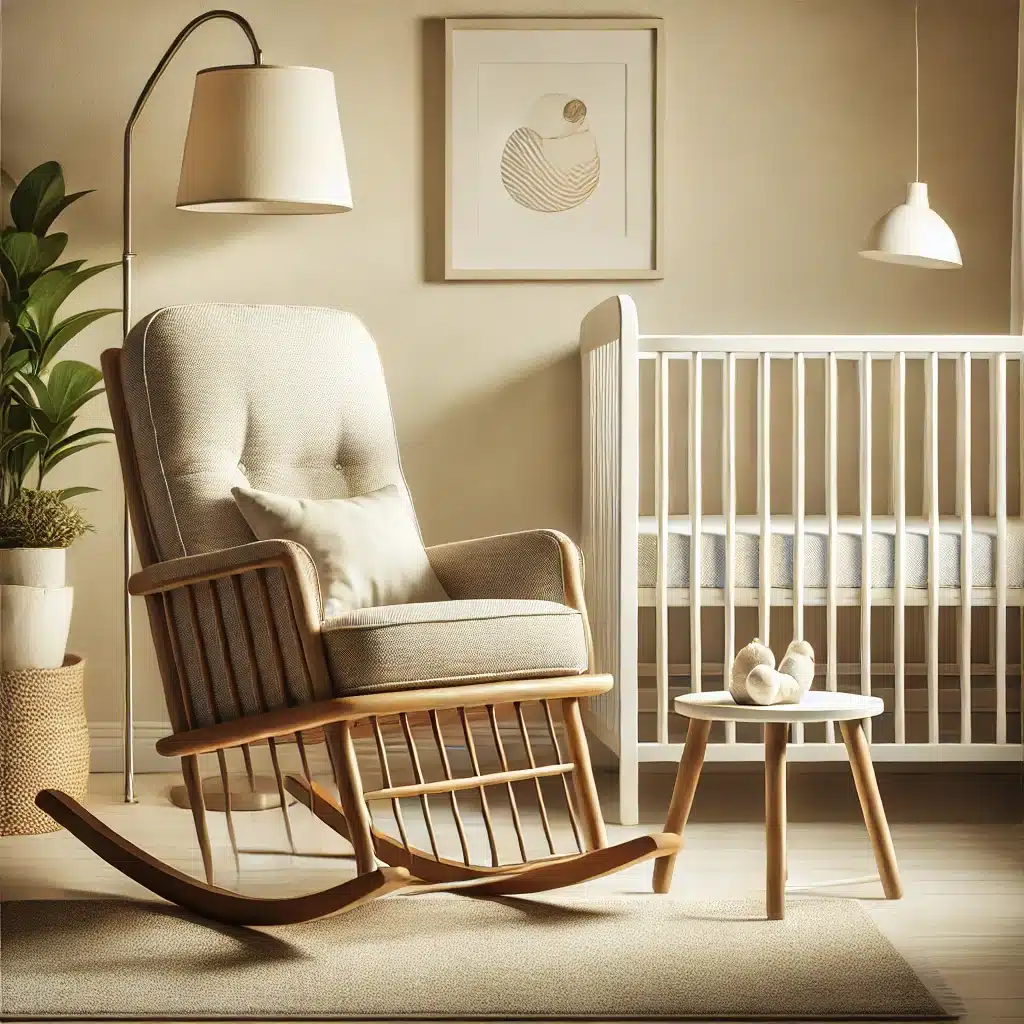
A comfortable rocking chair or glider is a must-have for feeding and soothing your baby. Look for one with good back support and soft cushions. Consider a chair with pockets for storing essentials like burp cloths, books and toys within easy reach.
Storage Solutions

Built-In Storage
Maximize storage with built-in shelves and cabinets in nursing room. These can hold books, toys and other essentials while keeping the room tidy. Custom-built storage can be designed to fit the specific dimensions of your room, making the most of every inch of space.
Baskets and Bins

Use baskets and bins for easy-access storage. Label them for quick organization, making it easier to find what you need. Baskets made of natural materials like wicker or fabric can add a decorative touch while keeping the nursery organized.
Lighting the Nursery
Soft Lighting
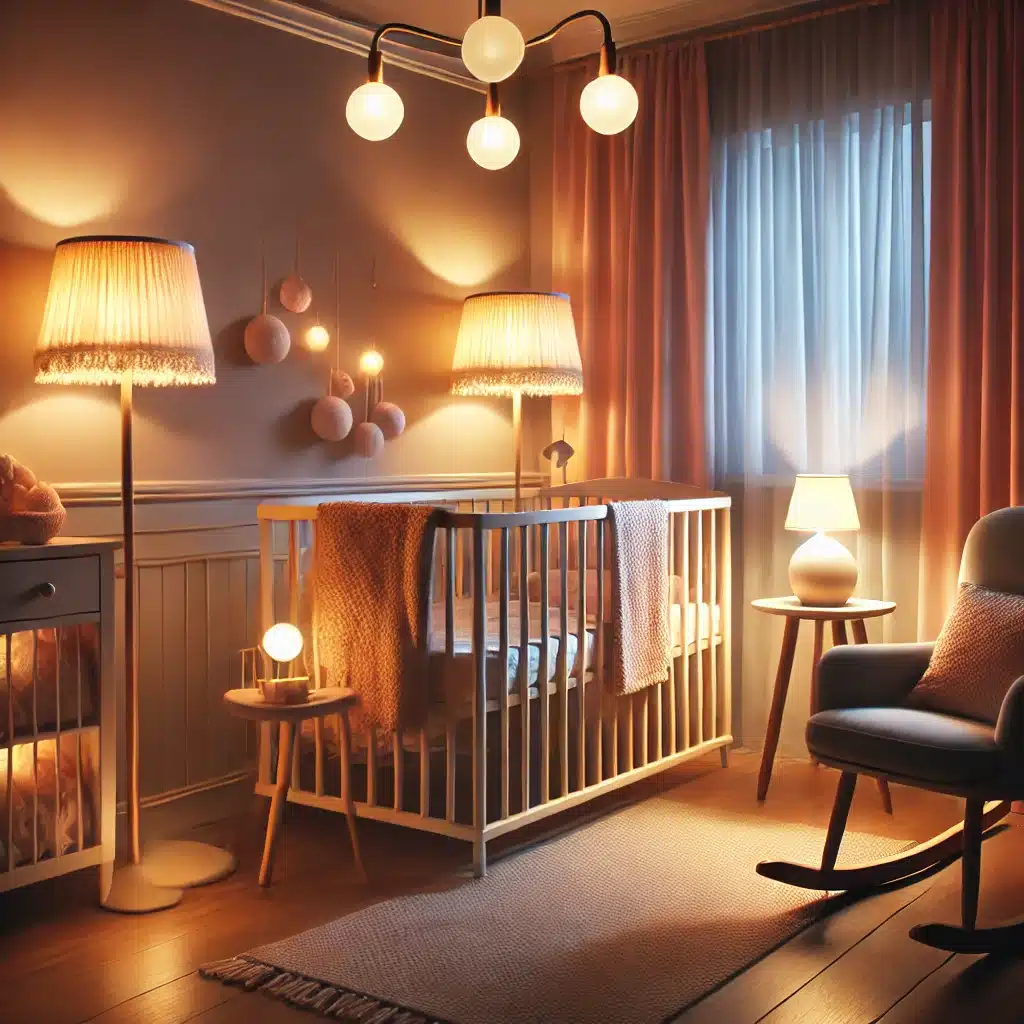
Soft, adjustable lighting is key for creating a cozy atmosphere. Use dimmable lamps or nightlights to provide a gentle glow during nighttime feedings. Consider using LED bulbs for energy efficiency and a longer lifespan.
Natural Light

Maximize natural light during the day. Use light-filtering curtains to soften the brightness and create a soothing ambiance. Sheer curtains or blinds can help control the amount of light entering the room while maintaining privacy.
Adding Personal Touches
Wall Art and Decor
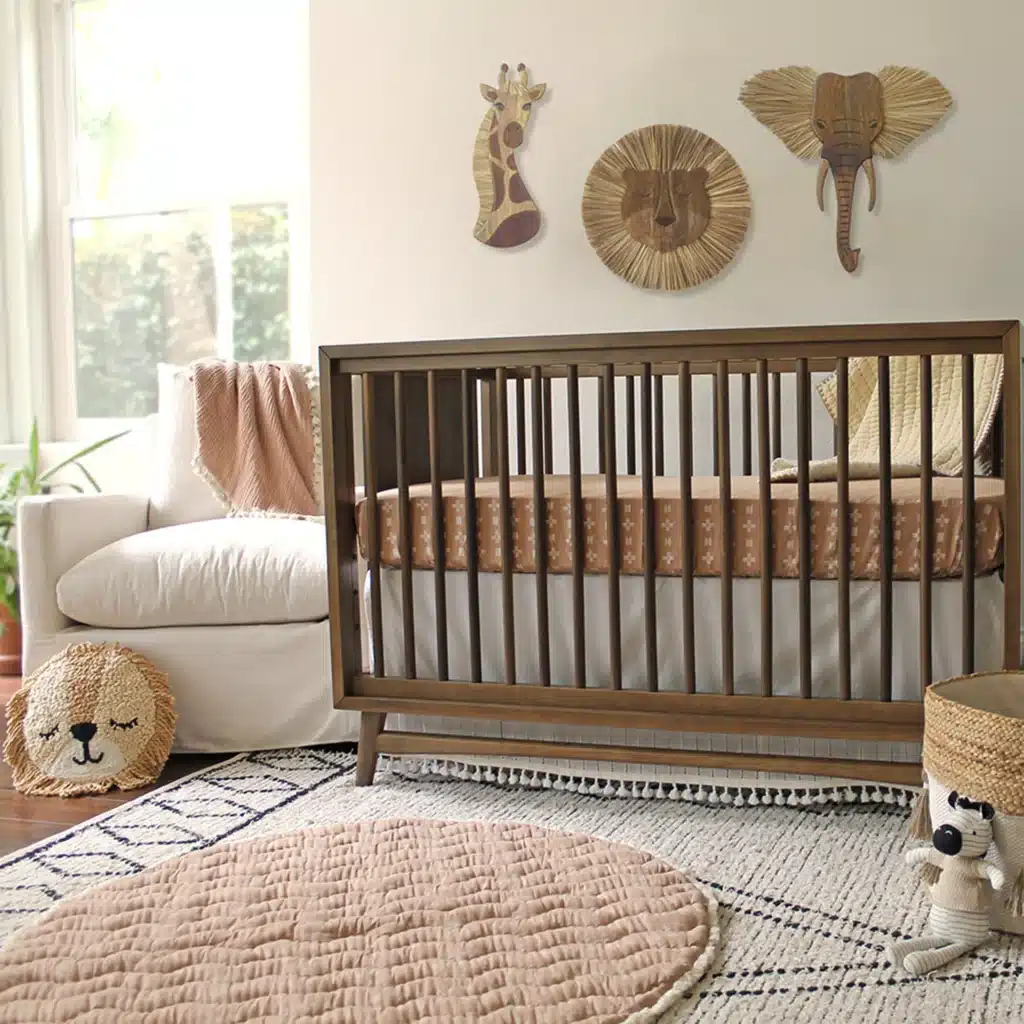
Personalize the nursery with wall art, family photos and decorative items. Choose pieces that reflect your style and add warmth to the room. Consider creating a gallery wall with framed prints, canvas art and handmade crafts.
Themed Nurseries
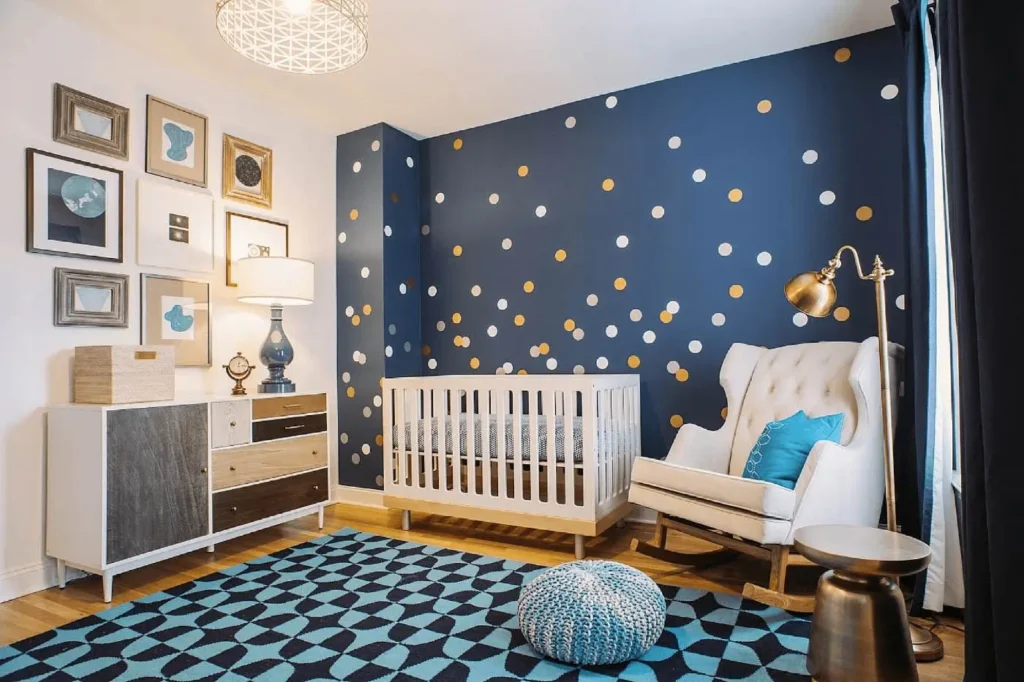
Consider a theme to tie the room together. Popular themes include animals, outer space and fairy tales. Use themed bedding, curtains and wall decals to create a cohesive look. Remember to keep the theme subtle to avoid overwhelming the space.
Safety First
Baby-Proofing
Ensure the nursery is safe by baby-proofing all furniture and fixtures. Secure heavy items to the wall, cover electrical outlets and use safety locks on cabinets. Ensure that any cords from blinds or electronics are out of reach and avoid placing furniture near windows.
Safe Sleep Environment
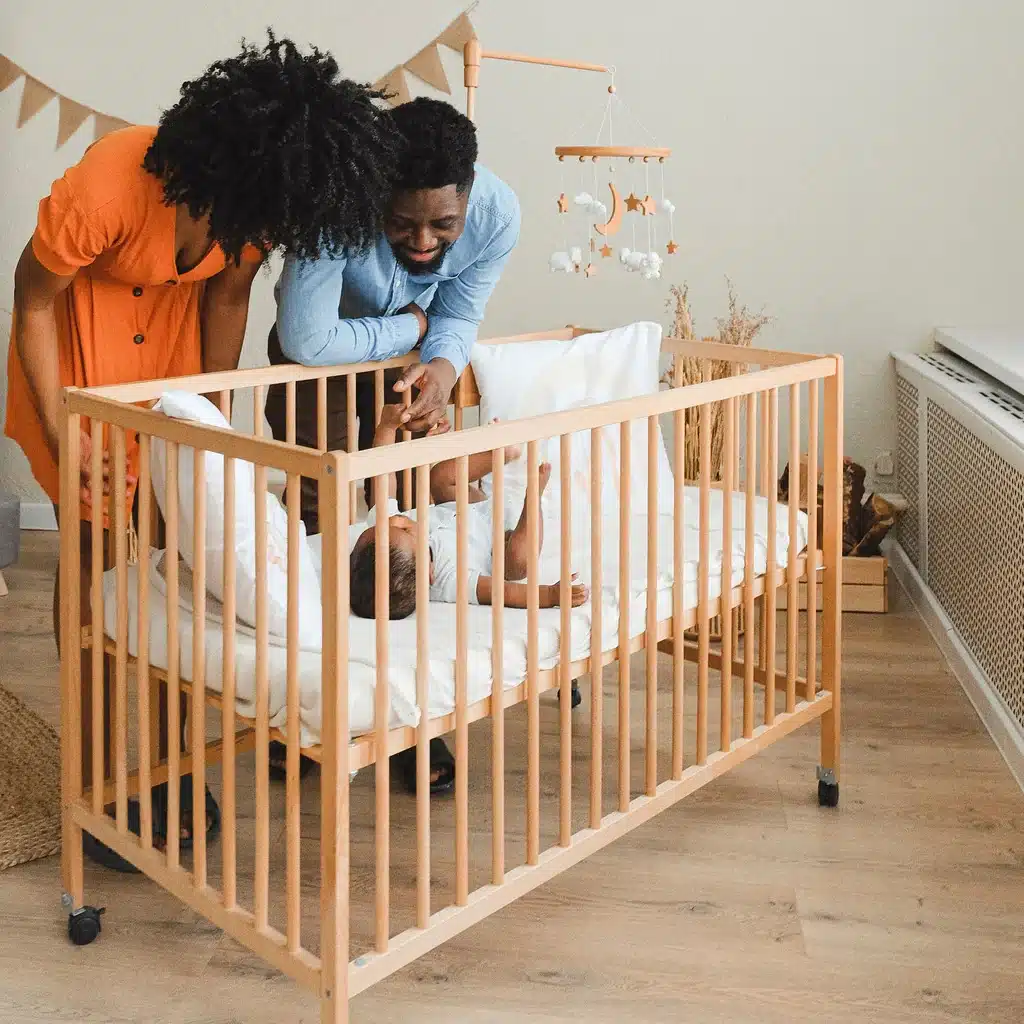
Create a safe sleep environment by keeping the crib free of pillows, blankets and stuffed animals. Use a firm mattress and fitted sheet to reduce the risk of SIDS (Sudden Infant Death Syndrome). Ensure the crib is placed away from any potential hazards like curtains or cords.
Practical Tips for Nursery Design
Multi-Functional Furniture

Invest in multi-functional furniture to save space and money. Items like a crib with built-in drawers or a changing table that converts to a dresser are practical choices. Look for furniture pieces that can be used in different ways as your child grows.
Easy-to-Clean Materials
Choose easy-to-clean materials for furniture and fabrics. Babies can be messy, so stain-resistant and washable items are a smart investment. Consider slipcovers for chairs and sofas that can be easily removed and washed.
Budget-Friendly Nursery Design
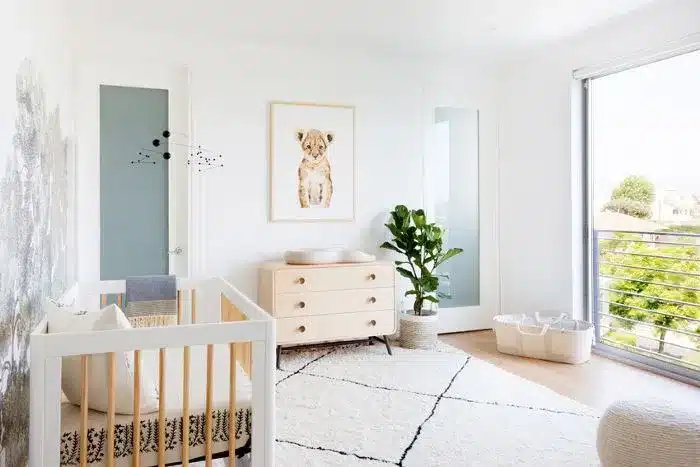
DIY Decor
Get creative with DIY decor to save money. Handmade mobiles, wall art and personalized items add a unique touch to the nursery without breaking the bank. Look for tutorials online or in craft books to inspire your projects.
Thrift and Upcycle
Consider thrift stores and online marketplaces for gently used furniture and decor. Upcycling old pieces with a fresh coat of paint or new hardware can give them a new life. Vintage furniture can add charm and character to your nursery at a fraction of the cost.
Creating a Growth-Friendly Nursery
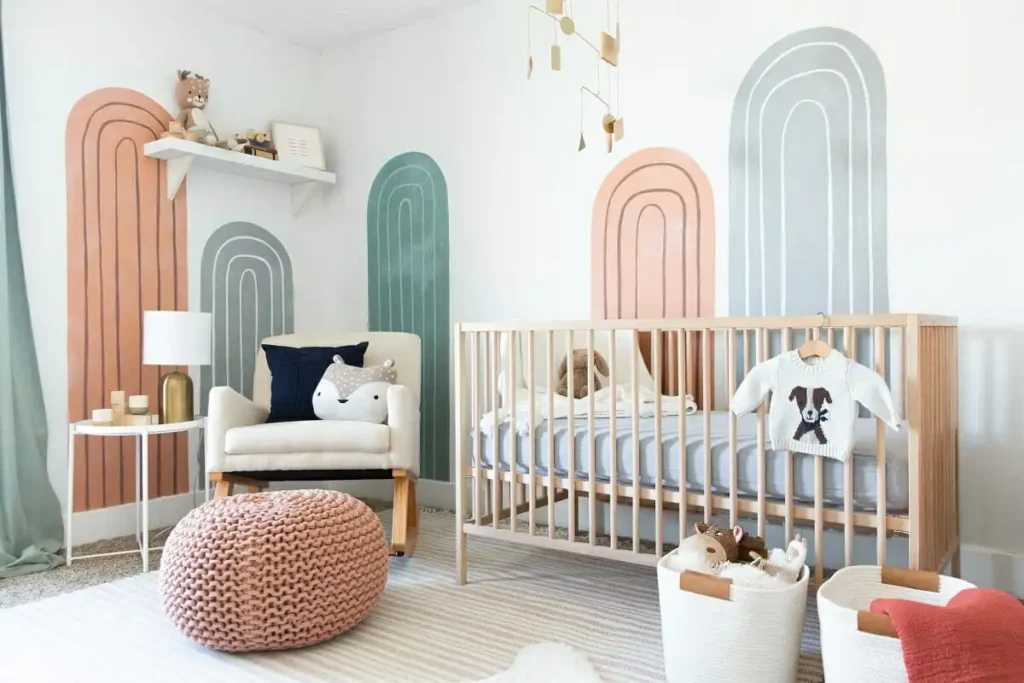
Adaptable Design
Design the nursery with adaptability in mind. Choose furniture and decor that can grow with your child. Convertible cribs, adjustable shelving and neutral colors make it easy to update the room as your child gets older. Opt for a timeless design that won’t feel outdated as trends change.
Interactive Elements
Incorporate interactive elements like a chalkboard wall, play tent, or reading nook. These features can grow with your child and provide endless entertainment. Consider adding a small table and chairs for arts and crafts or a cozy corner with pillows and blankets for reading.
Final Touches: Making It Special
Personal Items
Include personal items that have sentimental value. A handmade quilt, a family heirloom, or a special stuffed animal can make the nursery feel uniquely yours. These items will create a sense of continuity and connection for your child.
Functional Decor
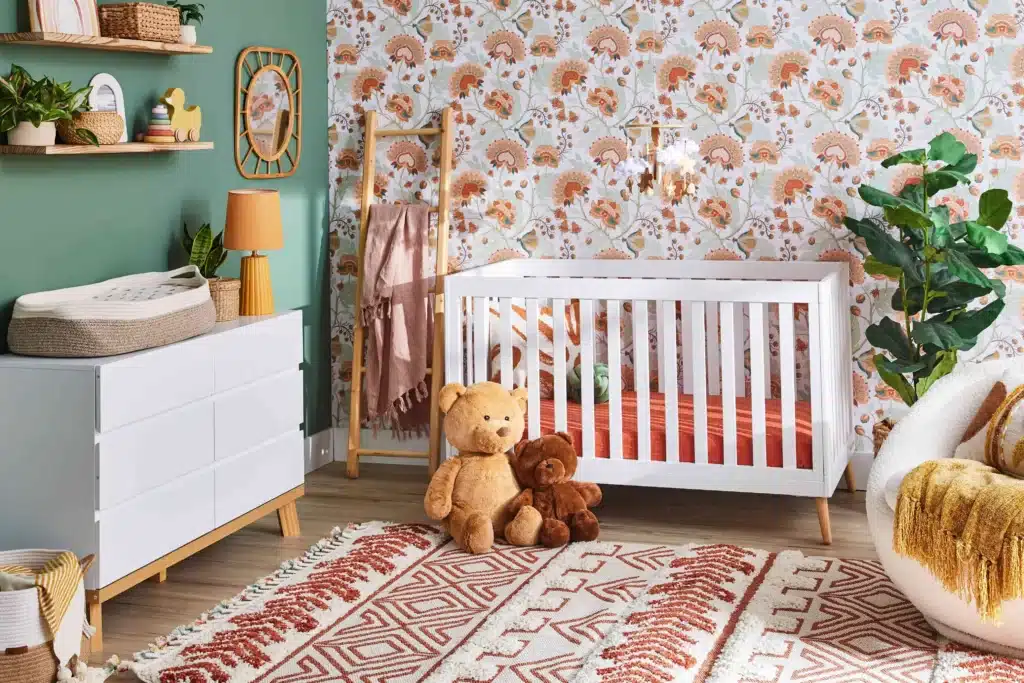
Incorporate functional decor items like a stylish clock, a growth chart and a nightlight. These items add practicality while enhancing the overall design. Look for pieces that match the room’s color scheme and theme.
Maintaining the Nursery
Regular Cleaning
Keep the nursery clean and clutter-free by establishing a regular cleaning routine. Dust shelves, vacuum the floor and wash bedding frequently to maintain a healthy environment for your baby. Use non-toxic cleaning products to ensure safety.
Seasonal Updates
Update the nursery decor seasonally to keep the room fresh and engaging. Swap out blankets, pillows and wall art to reflect the changing seasons. This can also be an opportunity to declutter and reorganize the space.
Creating a Multi-Functional Space
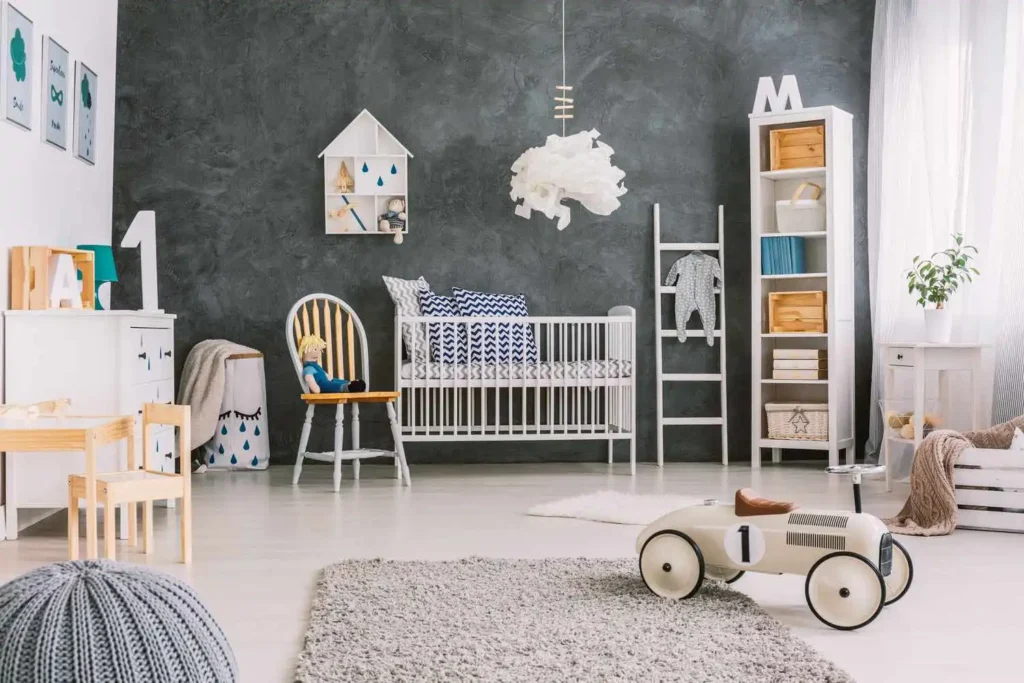
Play Area
Designate a play area within the nursery where your baby can explore and play safely. Use a soft rug or play mat and keep a basket of toys within reach. This area can be a great place for tummy time and other developmental activities.
Reading Nook
Create a cozy reading nook with a small bookshelf and comfortable seating. Encourage a love for reading by displaying a variety of age-appropriate books. As your child grows, this area can evolve into a study space.
Practical Storage Tips
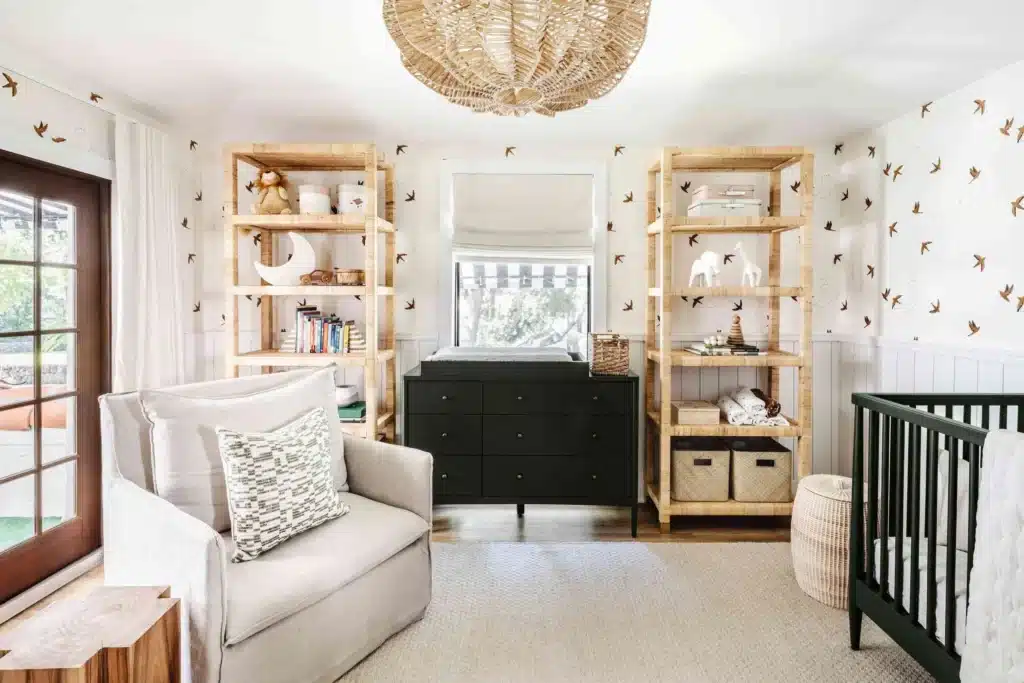
Closet Organization
Maximize closet space with adjustable shelving and hanging organizers. Store out-of-season clothes and larger sizes in labeled bins. Use small hangers for baby clothes to keep everything neat and accessible.
Toy Storage
Keep toys organized with bins, baskets and shelves. Rotate toys regularly to keep your child engaged and reduce clutter. Consider a toy chest with a soft-close lid to prevent little fingers from getting pinched.
Conclusion
Designing a nursery room is a rewarding experience that allows you to create a special space for your little one. By planning carefully, choosing the right color furniture and adding personal touches, you can design a nursery that’s both beautiful and functional. Remember, the key is to create a safe, comfortable and loving environment for your baby to thrive in. Embrace the journey and enjoy the process of bringing your dream nursery to life.


